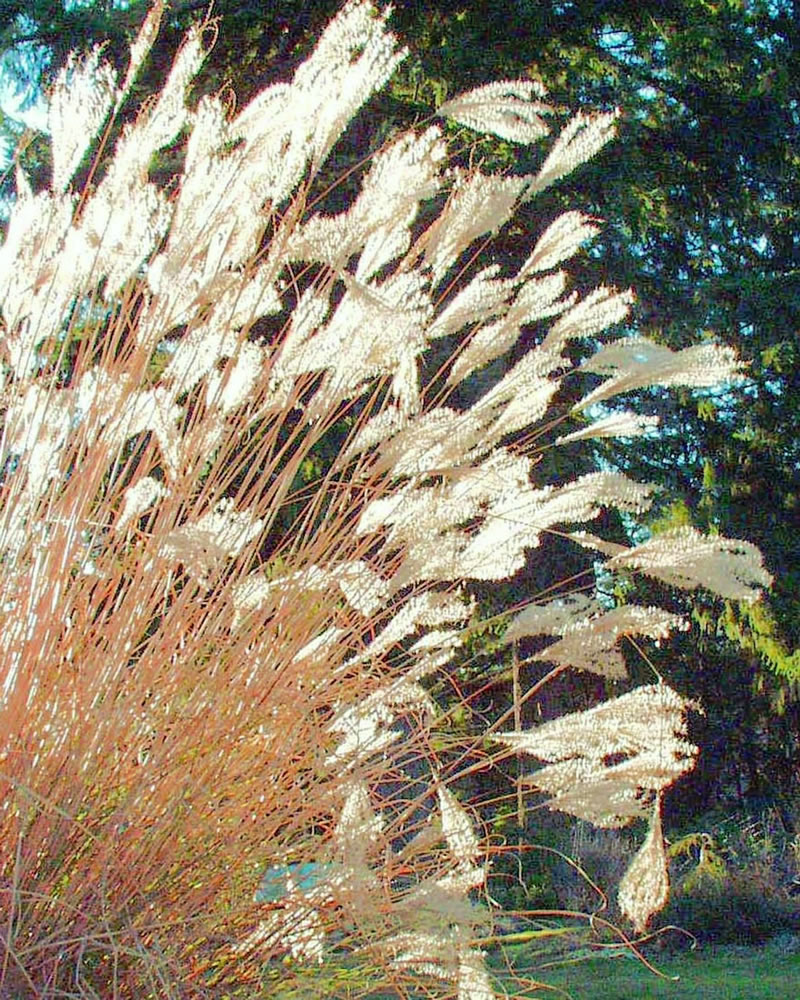Longtime gardeners have learned to add interest to the garden by allowing structural perennial plants to remain through the winter months. Of all the perennial plants that overwinter in my garden, the ornamental grasses hold sway with their year-round stature and seasonal interest. With the continuous introduction of interesting seed heads and sturdy plant stems, many gardeners have come to accept the tawny coloration of dried foliage in beds and borders through the season.
This spring, consider adding perennial garden plants specifically for their unique interest through the winter months. Look for sturdy, structural plants that do not need to be cut back until spring. The silhouette of sturdy stems adds structure to the winter void. Ornamental grasses are a perfect example. Most of the ornamental varieties continue to add visual interest while other perennials die back to ground level.
Even if ornamental grasses are laid flat by snowfall or a freezing rain, they miraculously rise again as soon as the foliage dries out. Once new plant growth begins in early spring, it’s time to cut the old stems down to the point where new growth is emerging. Do this before new growth gets too tall and becomes entangled with last year’s dried blades.
This is the perfect time to visit your favorite nursery center or one of the upcoming garden events featuring this year’s newest plant introductions.
We all have different levels of tolerance in our own gardens. Some cannot abide a single weed while others easily overlook weeds for any sign of seasonal interest. I think it’s important to get to know your personal limits in all aspects of gardening. If the look of a faded winter plant displeases you, it’s time to cut it back to a neat mound or down to the crown, depending on the type of plant. If you find yourself more displeased than pleased with a plant for more than one season, it may be time to remove it from your garden.
I live in the country and have a high tolerance for the natural look. Any plants that retain distinctive seed heads or seed pods are left intact as long as possible. This is especially beneficial to those of us who garden organically and rely on attracting birds to the garden to help with insect control. As you clean up beds and borders, make sure that there is still food and water available for the birds that have been drawn to your garden over the winter months.
Once you begin your spring cleanup in earnest, take a stroll around the garden in a different direction than usual. Look closely at areas of the garden you might be in the habit of ignoring. This is a good time to remove broken branches and dead wood that needs to be pruned out of shrubs and small trees. Use sharp, clean tools to make the most disease-resistant pruning cuts. Continue tidying up the backside of beds and borders as you make your way around the garden.
I always enjoy the brief lull between winter’s end and the beginning of spring. This is my time to envision a perfect spring. If I could have it all, what would I like my garden to be in this new year? I take the time to look back in my journal and refresh my memory. What new plants did I want to add this year? What project should I plan for now? While I can, I take it all in at a snail’s pace.
I wish that I was a bit more of a neat freak in the garden. At least the tidy gardener knows exactly when a plant looks bad to them and takes care of the issue right away. I often dilly-dally around on the chance that a minuscule flower bud might come back to life or in hopes that the late afternoon sun will illuminate that last hint of purple in a fading grass stalk. Sometimes I simply wait too long to do a job I could have done a month before. However you garden and whatever you decide to do in the garden this week, stop for a moment and listen to the whisper of the fading ornamental grasses as they wave farewell to the winter season.
Robb Rosser is a WSU-certified master gardener. Reach him at Write2Robb@aol.com.



